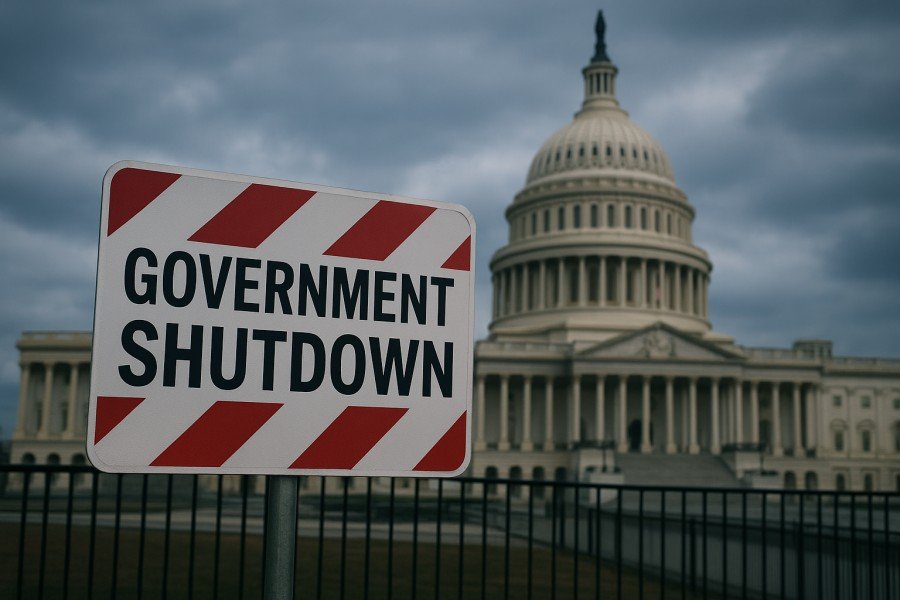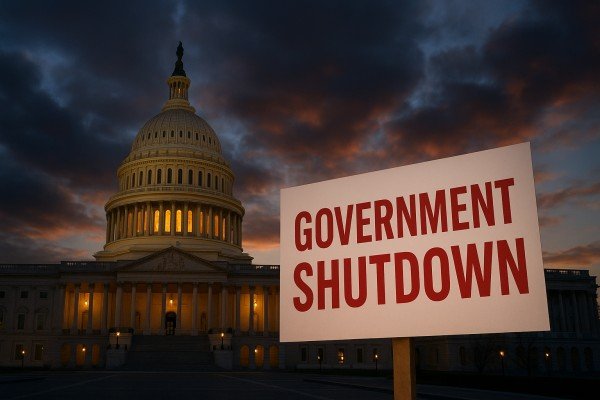The United States is once again facing the consequences of political deadlock, as the federal government officially shut down after lawmakers in Congress failed to pass a crucial funding bill. This marks another chapter in the country’s ongoing budget battles, leaving millions of citizens uncertain about essential services and raising questions about the health of American democracy. The U.S. Government Shutdown 2025 is now the latest reminder of how partisan gridlock can impact both governance and daily life.
Government shutdowns have become a recurring event in U.S. politics, but each one brings its own set of challenges. This time, the failure to pass the funding bill was the result of sharp disagreements between the House of Representatives and the Senate over spending priorities. While negotiations dragged on for weeks, no consensus was reached before the midnight deadline, triggering a lapse in government funding.
What Happens During a Government Shutdown
When the federal government shuts down, many agencies close or reduce operations. Federal employees deemed “non-essential” are furloughed without pay, while essential workers such as military personnel and air traffic controllers continue to work but may not receive timely paychecks. National parks and museums close, passport processing slows, and aid programs face interruptions. The U.S. Government Shutdown 2025 is expected to cost billions of dollars, adding to the economic toll seen in previous shutdowns.
The economic cost is also significant. Previous shutdowns have cost the U.S. economy billions of dollars, reducing consumer confidence and delaying business investments. According to the Congressional Budget Office, the 2019 shutdown alone reduced GDP growth in the first quarter of that year, illustrating how these standoffs go beyond politics and directly impact the everyday lives of Americans.
The Political Divide Behind the Shutdown
The latest shutdown highlights the growing polarization within American politics. Disputes over domestic spending, immigration, and defense budgets created a stalemate that neither party was willing to break. While the White House called for unity, divisions remained entrenched. Analysts say the U.S. Government Shutdown 2025 has become more than a fiscal issue—it’s a reflection of deeper struggles within the American political system.
Shutdowns often become political weapons, with each side hoping the public will blame the other. This short-term tactic, however, has long-term consequences, eroding public trust in institutions. It also highlights how much the U.S. political system depends on negotiation and compromise values that seem to be increasingly rare in Washington.

Impact on Citizens and Businesses
For ordinary citizens, the shutdown means uncertainty. Families relying on federal aid programs such as food assistance face delays. Travelers encounter disruptions as the Transportation Security Administration struggles with staffing issues. Small businesses that depend on federal loans are left in limbo, stalling growth and investment.
Internationally, government shutdowns weaken the perception of U.S. stability. Investors monitor these events closely, and global markets often react with caution when the world’s largest economy appears unable to manage its own finances. Such instability also puts pressure on allies who depend on U.S. commitments in defense and trade.
The Historical Context of Shutdowns
Government shutdowns are not new. Since 1976, there have been more than 20 instances where funding lapses forced the government to halt operations. The longest shutdown occurred in late 2018 and early 2019, lasting 35 days. Each event tends to follow a familiar pattern: political disagreements escalate, deadlines are missed, and federal workers and citizens bear the consequences until a deal is reached.
Observers often note that shutdowns are a uniquely American phenomenon. Other democracies experience political gridlock, but most have mechanisms to prevent the government from halting basic services. This recurring issue underscores the need for structural reforms in the U.S. budget process.
Looking Ahead: What Comes Next
The U.S. Government Shutdown 2025 will likely continue until lawmakers find a compromise that satisfies enough members of both parties. Historically, such deals are reached under mounting public pressure and economic strain. Citizens, businesses, and global partners are watching closely as leaders attempt to navigate this crisis.
While political debates are inevitable in any democracy, the repeated shutdowns raise an important question: Is the U.S. political system functioning as intended, or is it in need of reform? Many analysts argue that more stable fiscal policies are essential to protect both the domestic economy and America’s standing on the global stage.
For now, families, businesses, and federal employees must wait while political leaders continue their negotiations. Whether this shutdown lasts days or weeks, its effects will be felt far beyond Washington.








